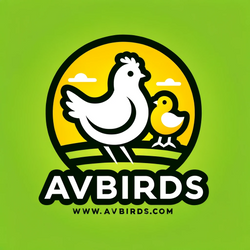Shipping live chicks can feel daunting if you’re new to the mail-order game. How do those tiny birds survive a trip in a box, what regulations do you need to know, and how do you set up for a smooth arrival? You’ve probably browsed day-old chicks for sale and seen hatcheries mention heat packs, special boxes, and livability guarantees. In this guide, I’ll walk you through everything you need to know, from USPS rules to brooder setup, so your new peeps arrive chirping and ready to thrive.
Understanding Live Chick Shipping
Why Mail-Order Chicks
Mail-order makes it easy to access rare breeds, low-minimum orders, and vaccinated chicks. You can pick from rhode island red chicks, easter egger chicks, or even colored layers like blue and green egg producers. Instead of driving hours to a hatchery, you order online and get a box on your porch.
Common Shipping Methods
Most hatcheries rely on USPS Priority Mail or Priority Mail Express. Some also partner with livestock-approved freight couriers for short hauls. International orders use climate-controlled holds, for example via Lufthansa Cargo at Frankfurt.
- USPS Priority Mail – 1 to 3 days transit, live poultry service.
- Freight Couriers – livestock-certified vans or trucks for warm climates.
- Airline Cargo – IATA-certified carriers for overseas shipments.
Navigating Postal Regulations
USPS Poultry Guidelines
The United States Postal Service has clear rules for mailing live day-old poultry. You must follow these key points (USPS):
- Only day-old chicks, ducks, geese, quail, and similar birds under 24 hours old.
- Original, unopened hatchery box with proper ventilation holes.
- Mail early in the week to avoid Sunday or holiday delays.
- Transit should not exceed 72 hours, though under 48 hours is ideal.
Import Requirements
If you’re bringing chicks in from abroad, USDA rules kick in. Live poultry imports need:
- An import permit via the Veterinary Services Permitting Assistant (VSPA).
- A Veterinary Export Health Certificate from the country of origin.
- Inspections at designated ports, such as Miami International Airport or JFK.
- Quarantine at USDA Animal Import Centers until cleared (USDA APHIS).
Preparing Chicks For Transit
Packaging And Warmth
Hatcheries package chicks with excelsior nesting material and single-use heat packs. The nest fiber is absorbent and cozy, while the heat pack releases safe warmth up to 96 hours. Boxes range from small (up to 25 chicks) to large (up to 100 chicks), with dividers to prevent crowding. Chicks ingest a yolk sac reserve right before hatch, giving them energy for travel and ensuring they arrive lively 1 to 3 days after shipping (Meyer Hatchery Blog).
Timing And Scheduling
Timing can make or break a shipment. To minimize stress or loss:
- Ship only Mondays through Wednesdays, avoiding weekend or holiday delays.
- Aim for delivery within 48 hours, especially in extreme weather.
- Check forecasted temperatures and reroute if heat or cold extremes threaten the chicks.
Spotting Shipping Risks
Health And Mortality Concerns
Shipping involves stressors that can spike mortality immediately or weeks later. According to The Feather Brain, common causes include:
- Temperature swings in transit.
- Prolonged confinement leading to fatigue.
- Dehydration once the yolk sac runs dry, often before feed access.
Dehydration And Nutrition
Even though chicks can survive on yolk reserves for up to 72 hours, they still need food and water almost immediately on arrival. To ease the transition:
- Offer a shallow waterer with electrolytes or sugar solution.
- Provide chick starter feed right next to their heat source.
- Show them how to eat by dipping their beaks in feed and water.
Setting Up Your Brooder
Temperature And Lighting
A stable brooder keeps chicks warm and active. Aim for:
- Week 1: 95°F at chick level, lowering 5°F each week until 70°F.
- A heat lamp or infrared brood plate hung high enough to prevent burns.
- Enough floor space (0.5 sq ft per chick) so they can move away from or toward the heat.
Brooder Supplies
Stock up on essentials before arrival. Key items include:
- A sturdy brooder box or pen that’s predator-proof.
- Chick brooder supplies like heat source, bedding, and thermometer.
- Shallow feeders and waterers that tip-proof and easy to clean.
Choosing The Right Hatchery
Minimum Order Requirements
Seasonal minimums vary: April through November you can order as few as three chicks, while winter months often require eight or more. If you want very small runs, check our minimum order chicks page for hatcheries specializing in low minimums.
Livability Guarantees
A strong hatchery backs its chicks with a livability policy. Many offer:
- 48-hour replacement or refund for lost or injured chicks.
- Store credits if you wait a bit beyond arrival to report issues.
- Clear care instructions to maintain their guarantee.
Your Next Steps
Here’s how to turn this guide into action:
- Review your brooder and order any missing gear from our chick supply pages.
- Place your order for new chicks—consider our hatchery choice chicks for a curated mix.
- Explore the chicken breed finder to match breeds with your climate and goals.
Got a tip or a question about shipping live chicks? Drop a comment below so we can all learn together.

